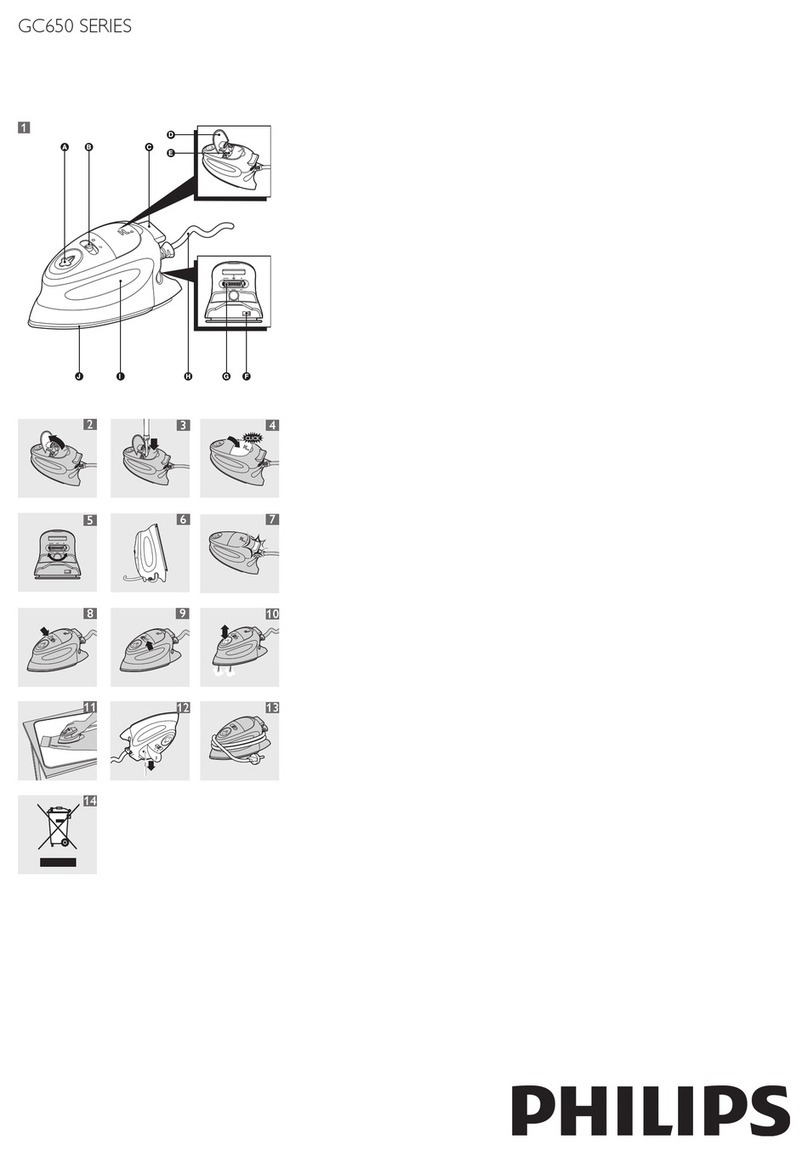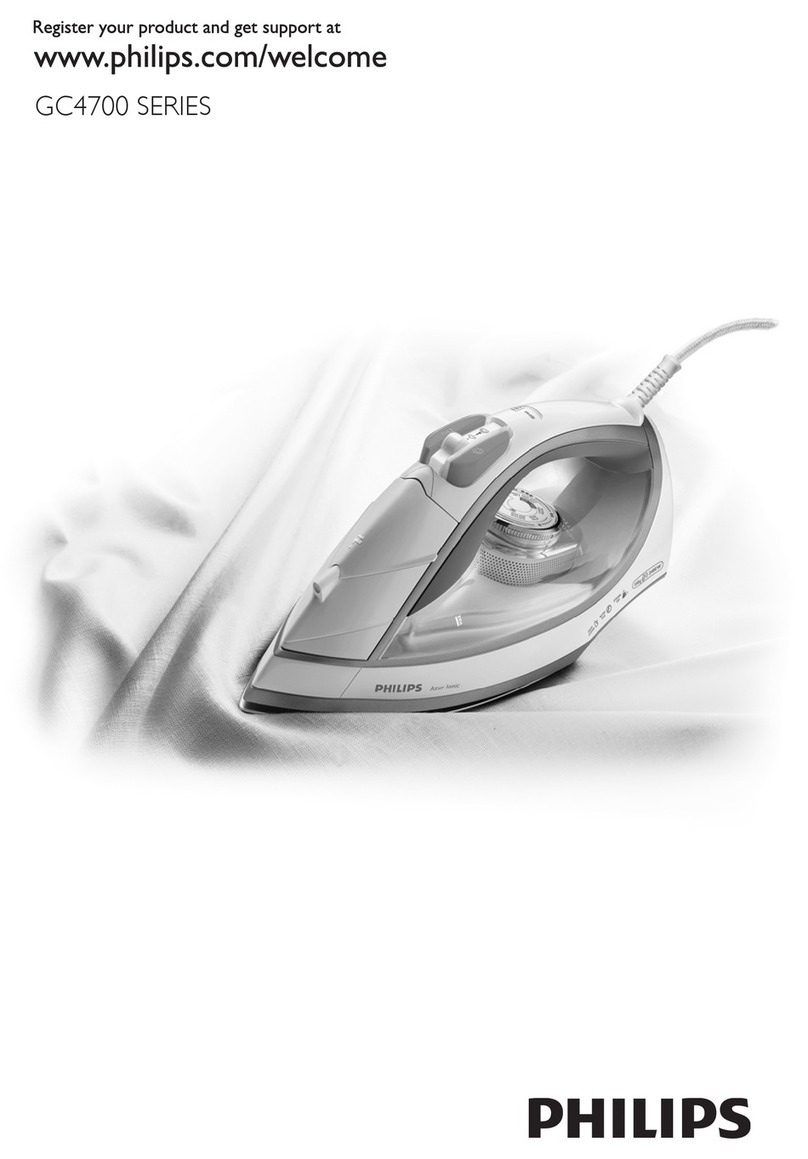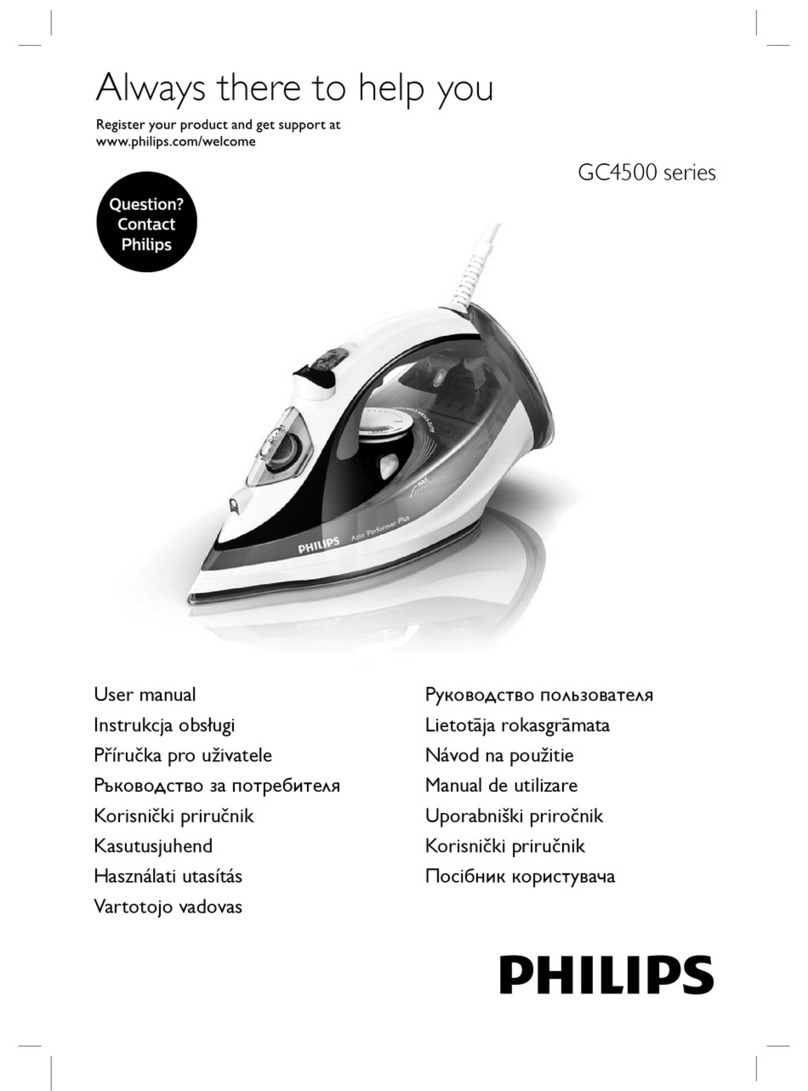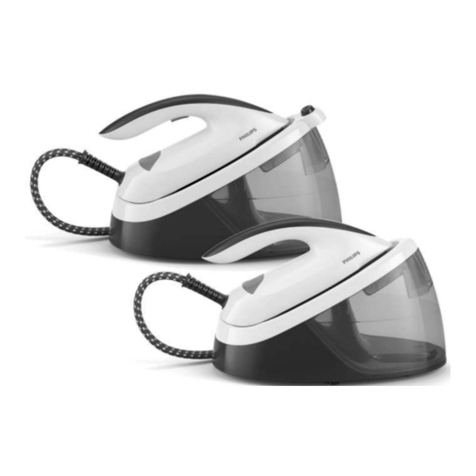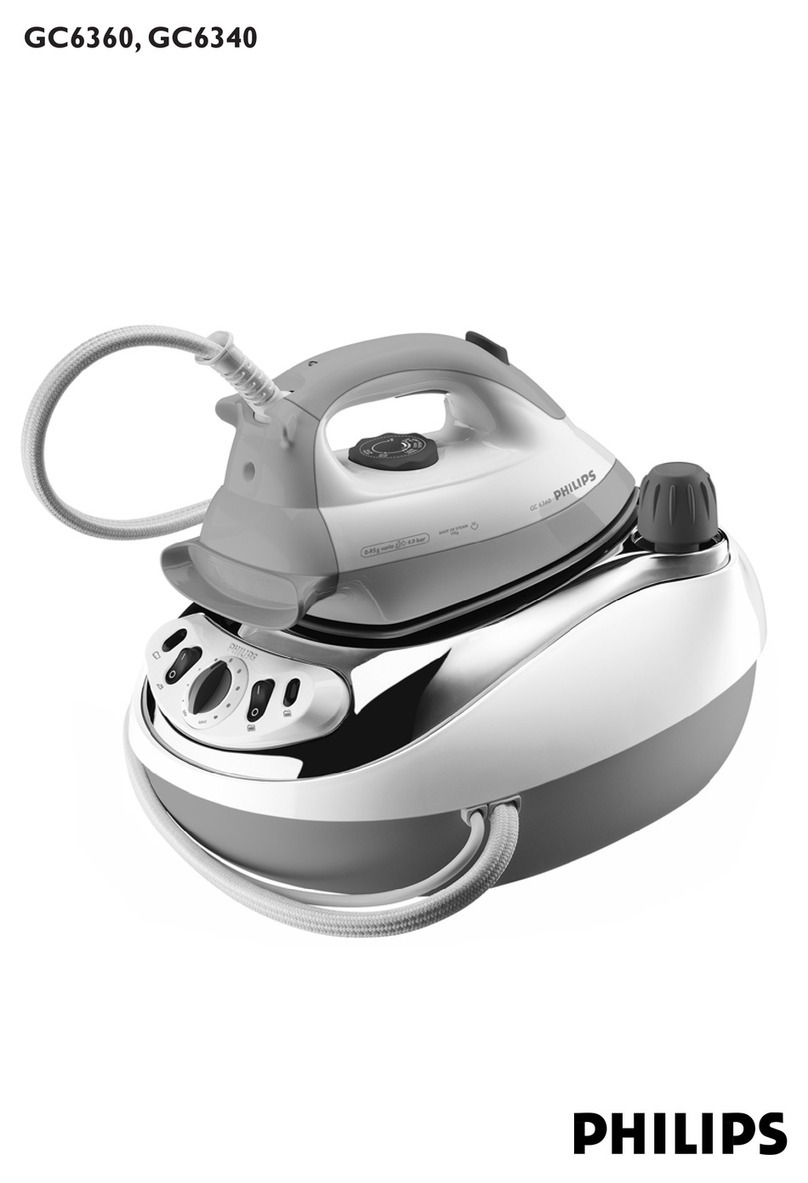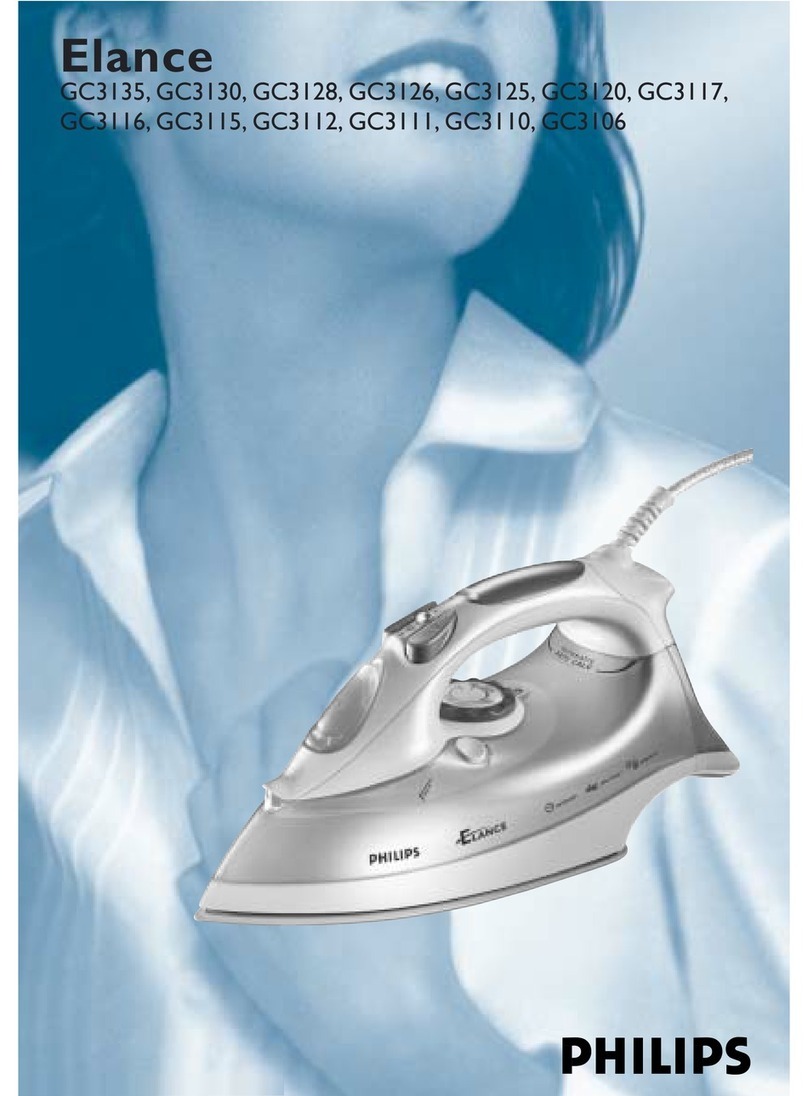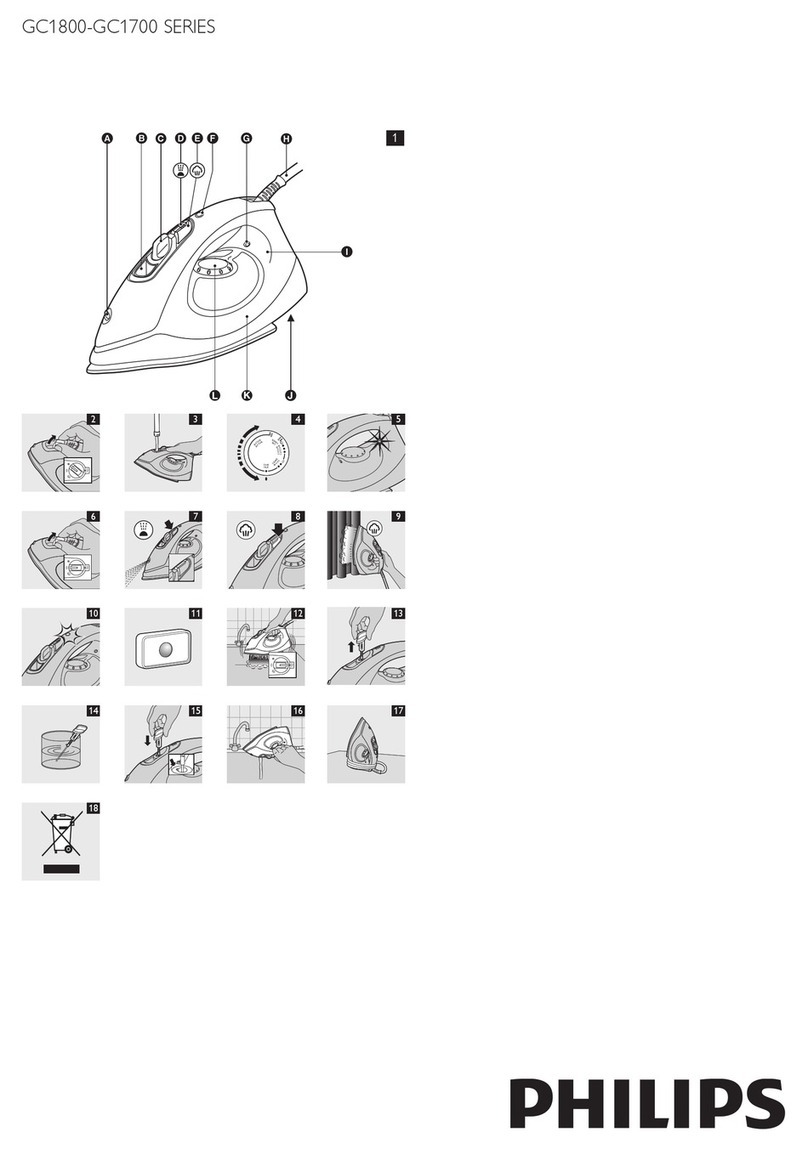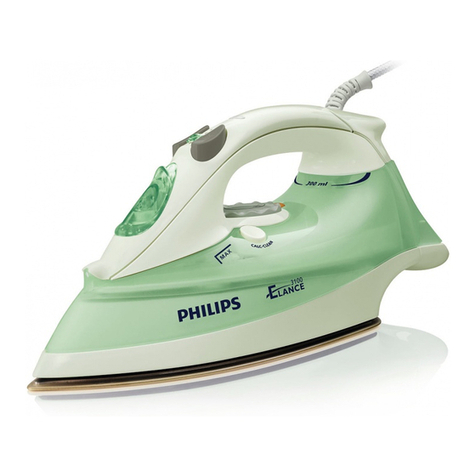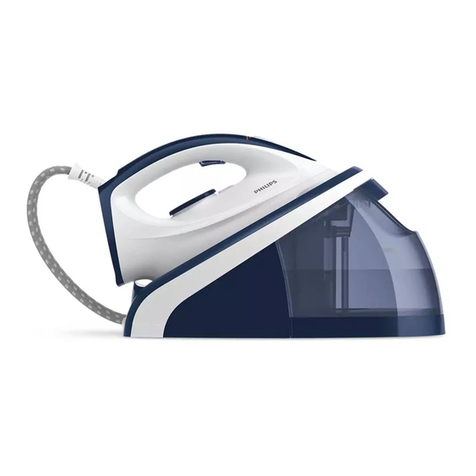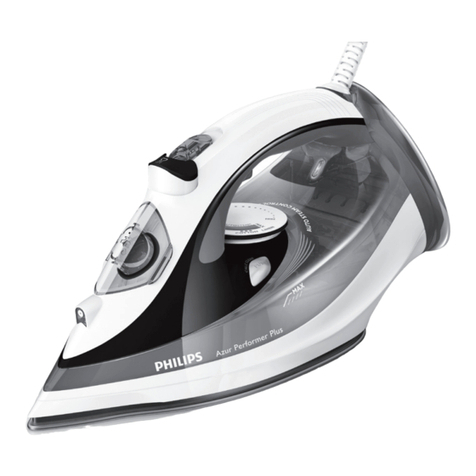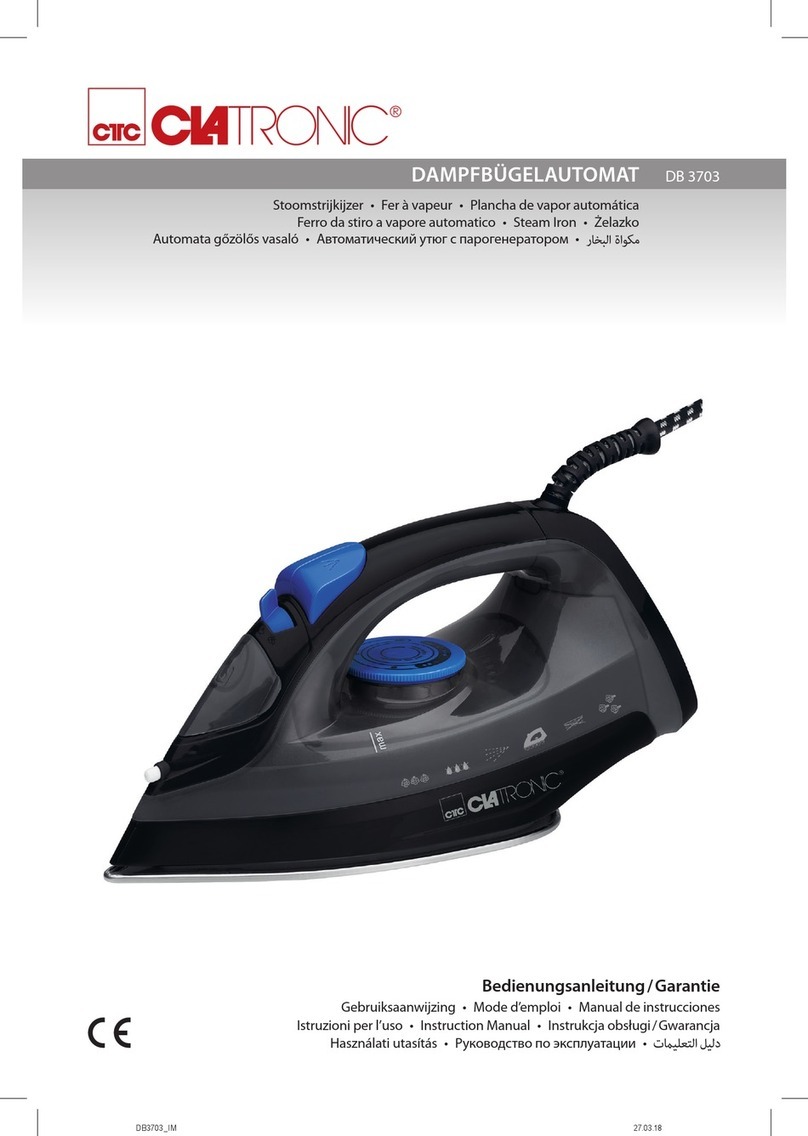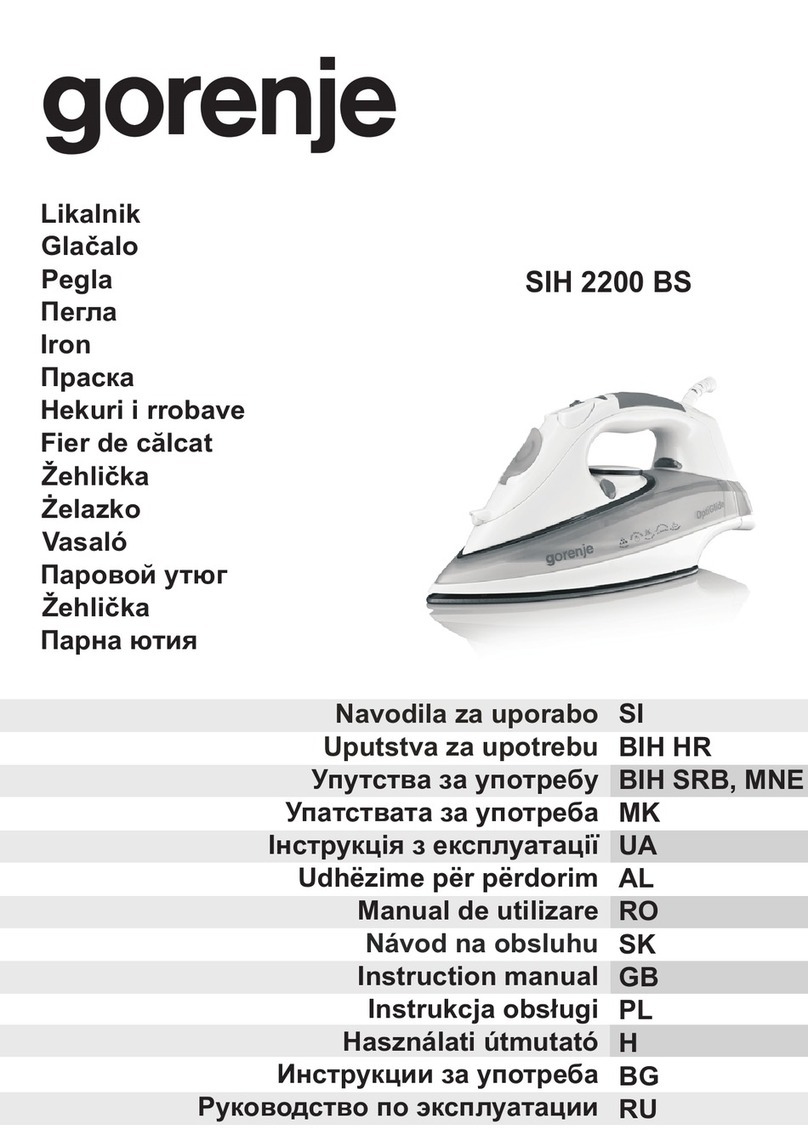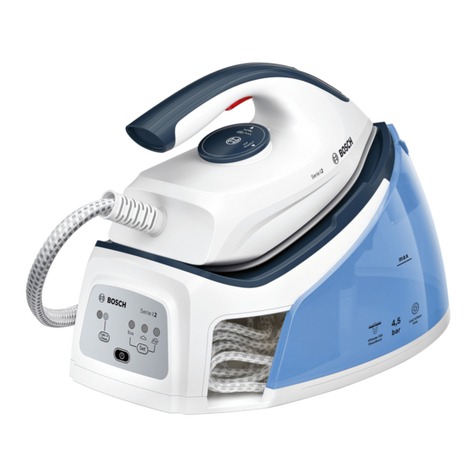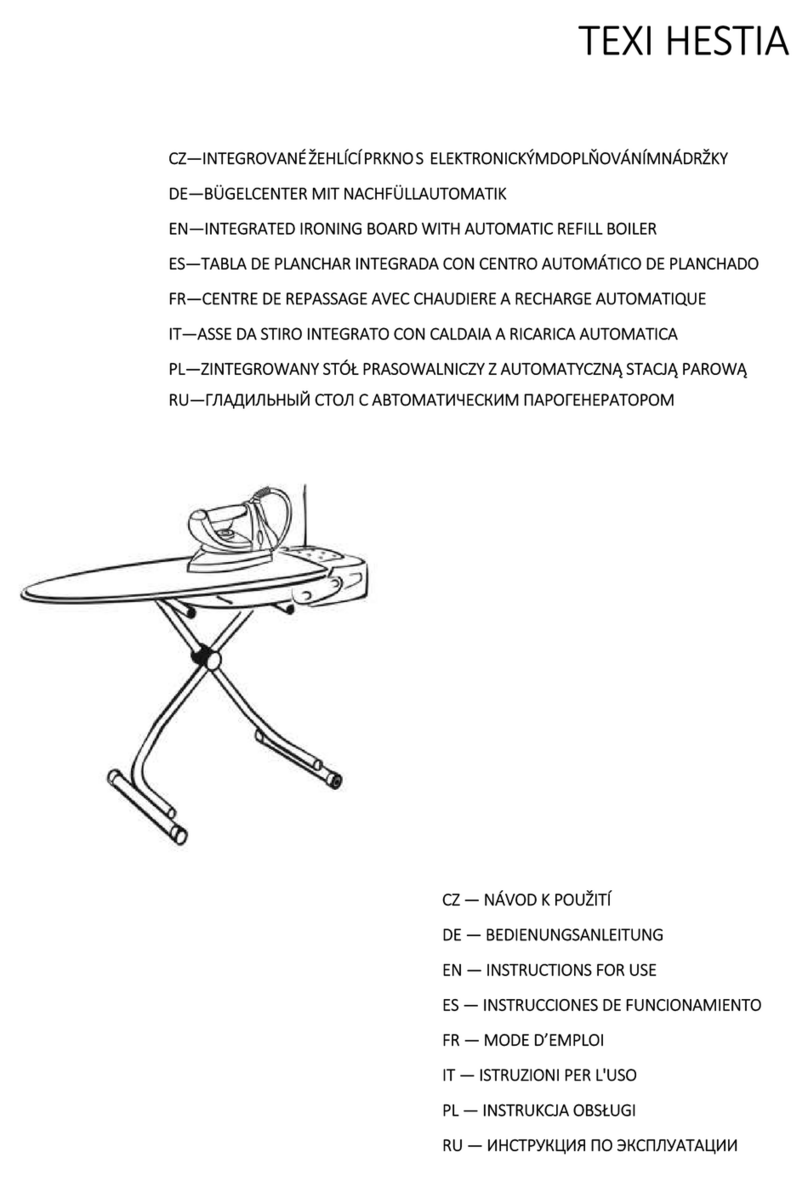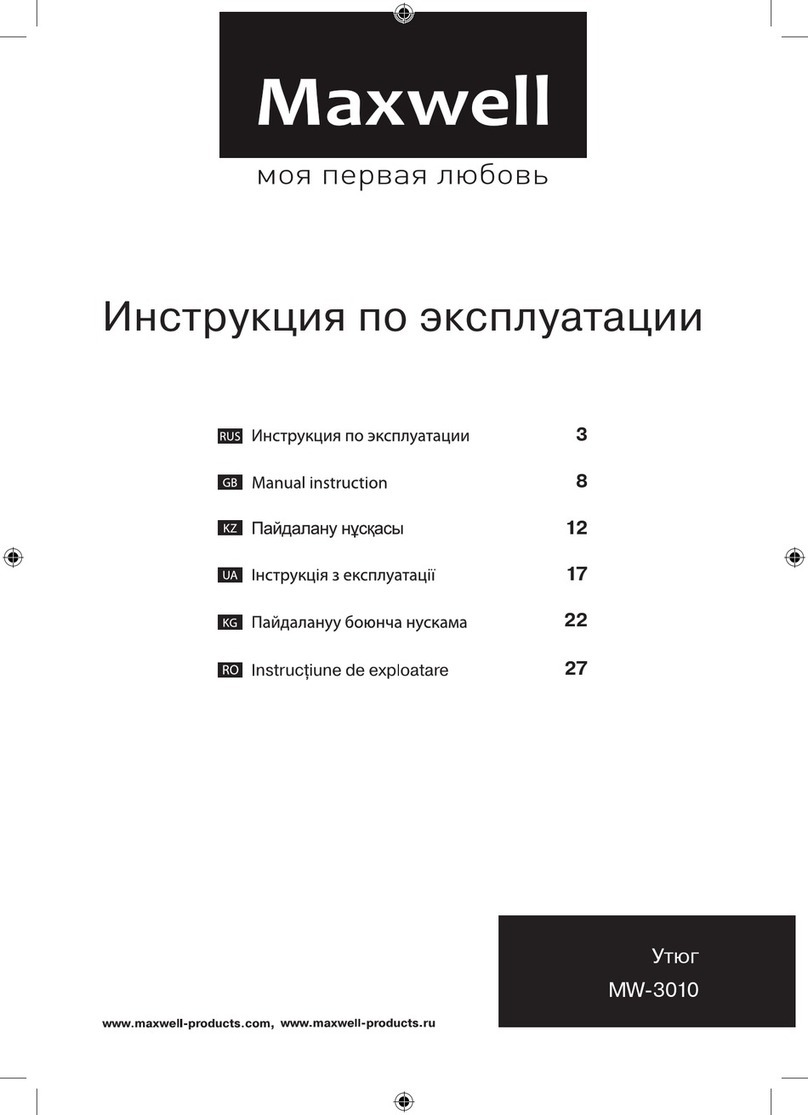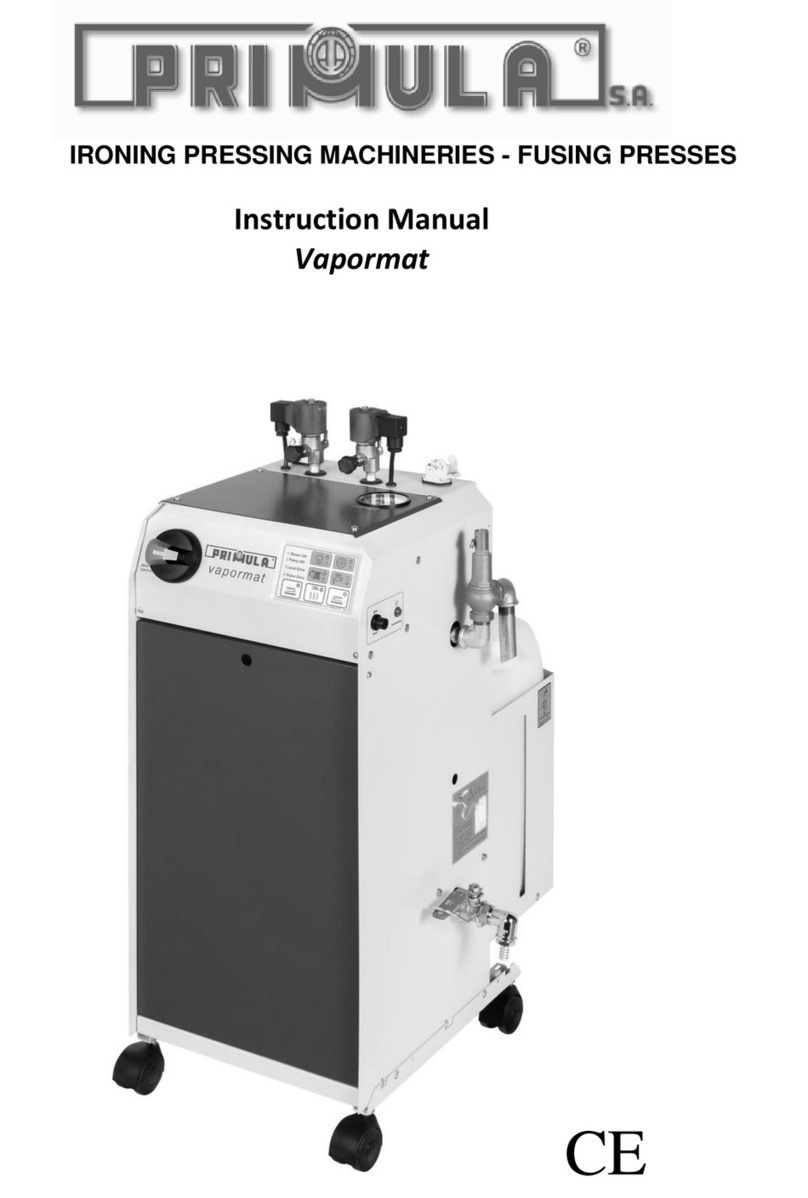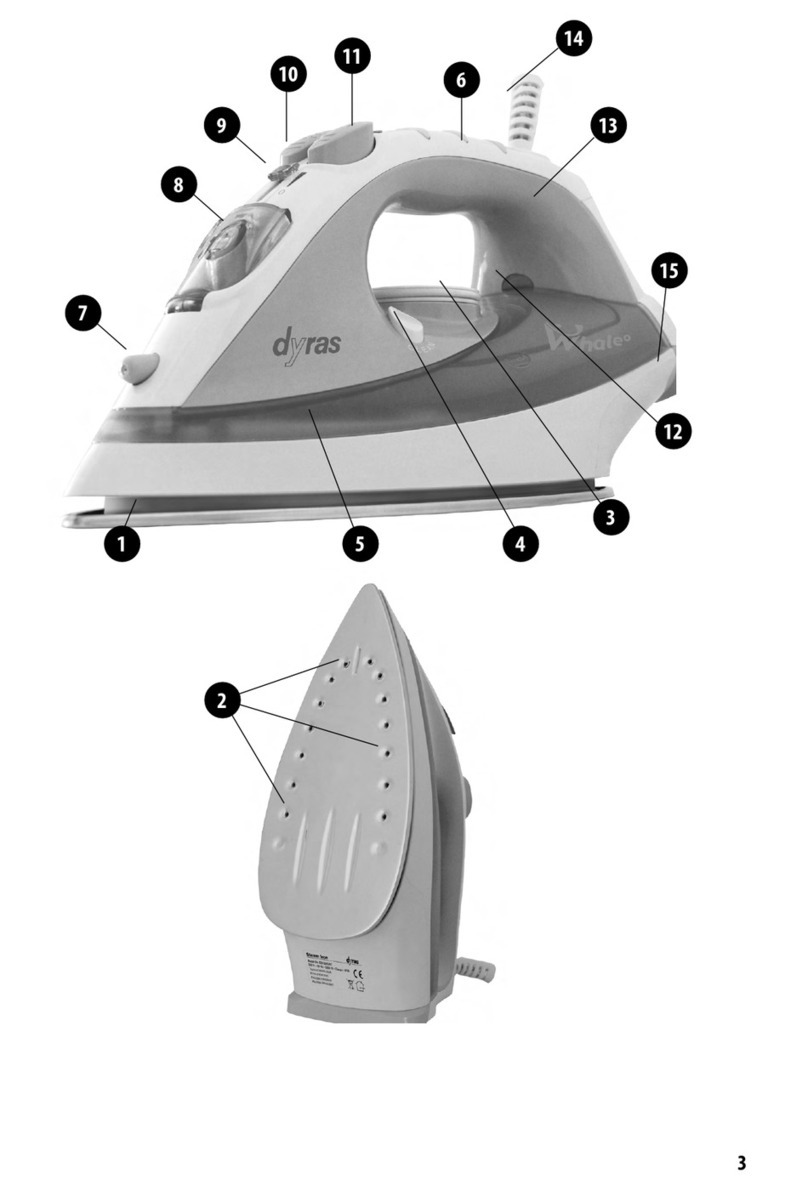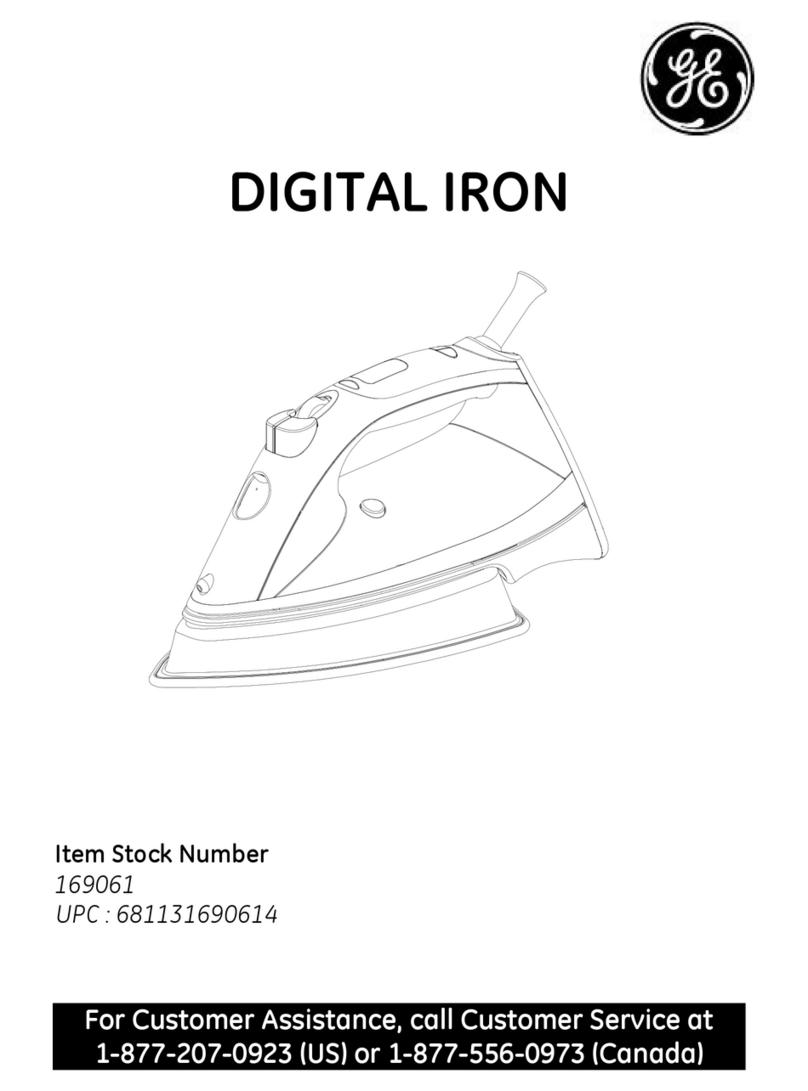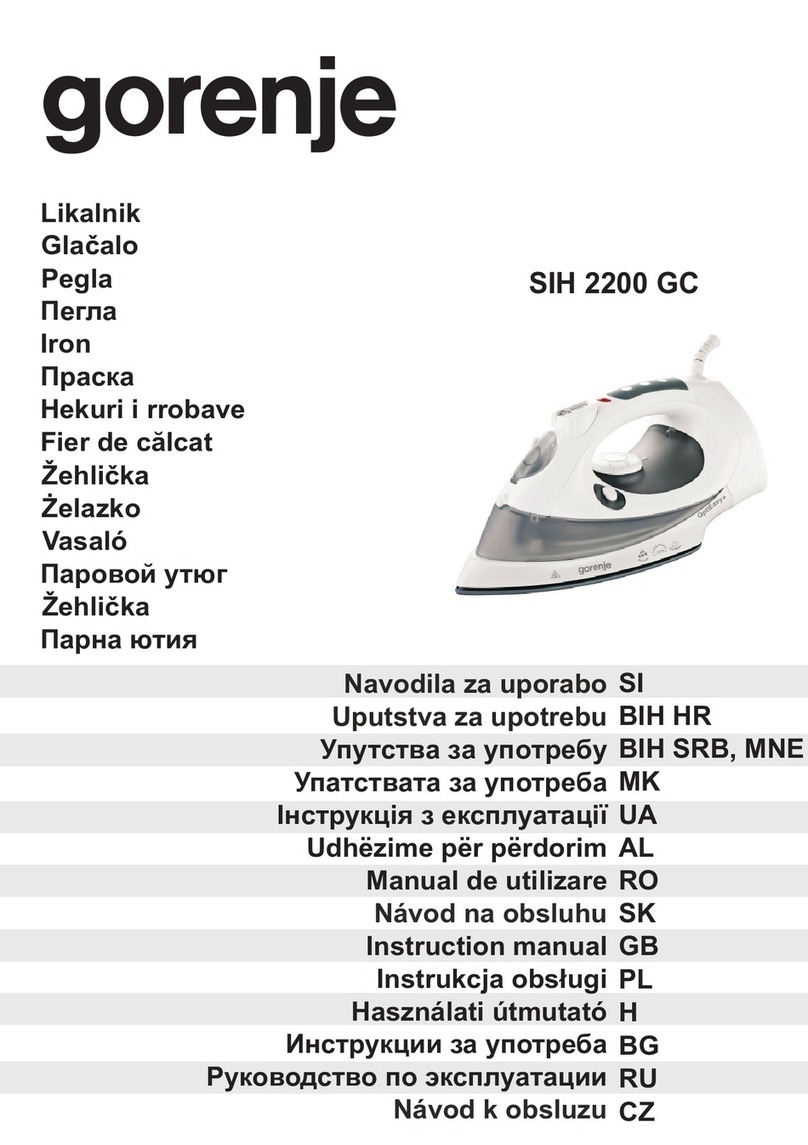ENGLISH
General description (fig. 1)IIIIIIIIIIIIIIIIIIIIIIIIIIIIIIIIIIIIIIIIIIIIIIIIIIIIIIIIIIIIIIIIIIIIIIIIIIIIIIIIIIIIIIIIIIIIIIIIIIIIIIIIIIIIIIIIIIIIIIIIIIIIIIIIIIIIIIII
ATemperature control dial
BSteam control dial
O= no steam
q= moderate steam
w= maximum steam
x= Calc-Clean function
CSpray button T(types GC1121, GC1120, GC1115 and GC1015)
DSpray nozzle (types GC1121, GC1120, GC1115 and GC1015)
ETemperature pilot light
FWater filling opening
GWater tank
HType plate
ICord
JExtra Steam function (press steam control dial) (type GC1121 and GC1120)
Important IIIIIIIIIIIIIIIIIIIIIIIIIIIIIIIIIIIIIIIIIIIIIIIIIIIIIIIIIIIIIIIIIIIIIIIIIIIIIIIIIIIIIIIIIIIIIIIIIIIIIIIIIIIIIIIIIIIIIIIIIIIIIIIIIIIIIIIIIIIIIIIIIIIIIIIIIIIIIIIIIIIIIIIIIIIIIIIIIIIIIIIIIIIIIIIIIIIIIIIIIIIIIIII
◗For optimal safety, read these instructions carefully and look at the illustrations
before you start using the appliance.
◗Keep these instructions for future reference.
◗Never leave the iron unattended when it is connected to the mains.
◗This appliance is not intended for use by children.
◗Keep an eye on children to make sure that they do not play with the appliance.
◗The soleplate of the iron can become extremely hot and may cause burns if
touched.
◗Never use the appliance if it is damaged in any way.
◗When you have finished ironing, when you clean the appliance, when you fill or
empty the water tank and also when you leave the iron even for a shor t while:
set the steam control to position O, put the iron on its heel and remove the
mains plug from the wall socket.
◗If the supply cord is damaged, it must be replaced by a special cord or assembly
available from Philips or a service agent.
◗Check if the voltage indicated on the type plate corresponds to the local mains
voltage before you connect the appliance.
Before first useIIIIIIIIIIIIIIIIIIIIIIIIIIIIIIIIIIIIIIIIIIIIIIIIIIIIIIIIIIIIIIIIIIIIIIIIIIIIIIIIIIIIIIIIIIIIIIIIIIIIIIIIIIIIIIIIIIIIIIIIIIIIIIIIIIIIIIIIIIIIIIIIIIIIIIIIIIIIIIIIIIIIIIIIIIIIIIIIIIIIIIIIIII
1Remove sticker or protective foil from the soleplate if there is any.
2Heat up the iron to the maximum temperature and pass the iron over a piece
of damp cloth for several minutes to remove any residues from the soleplate.
The iron may give off some smoke when you use it for the first time.This will cease
after a short while.
Filling the water tankIIIIIIIIIIIIIIIIIIIIIIIIIIIIIIIIIIIIIIIIIIIIIIIIIIIIIIIIIIIIIIIIIIIIIIIIIIIIIIIIIIIIIIIIIIIIIIIIIIIIIIIIIIIIIIIIIIIIIIIIIIIIIIIIIIIIIIIIIIIIIIIIIIIIIIIIIIIIIII
Never immerse the iron in water.
1Remove the mains plug from the wall socket.
2Set the steam control to position O (= no steam) (fig. 2).
3Tilt the iron backwards.
4Fill the water tank with cold tap water up to the maximum level (fig. 3).
Do not fill the water tank beyond the MAX indication.
Only use water. Do not use vinegar, starch, ironing concentrates or chemically
descaled water.
If the tap water in your area is very hard, we advise you to mix it with an equal
amount of distilled water or to use distilled water only.
Setting the temperatureIIIIIIIIIIIIIIIIIIIIIIIIIIIIIIIIIIIIIIIIIIIIIIIIIIIIIIIIIIIIIIIIIIIIIIIIIIIIIIIIIIIIIIIIIIIIIIIIIIIIIIIIIIIIIIIIIIIIIIIIIIIIIIIIIIIIIIIIIIIIIIIII
1Put the iron on its heel.
2Check the garment label for the required ironing temperature:
1Synthetic fabrics (e.g. acrylic, viscose, polyamide, polyester)
1Silk
2Wool
3Cotton, linen
If you do not know what kind of fabric(s) a garment is made of, determine the right
ironing temperature by ironing a part that will be invisible when you wear the
garment.
Silk, woollen and synthetic materials: iron the reverse side of the fabric to prevent
shiny patches. Avoid using the spray function to prevent stains.
Start ironing the articles that require the lowest ironing temperature, such as those
made of synthetic fibres.
3Set the temperature control dial to the required ironing temperature by
turning it to the appropriate temperature indication (fig. 4).
4Put the mains plug in an earthed wall socket.
5When the temperature pilot light has gone out, wait a while before you start
ironing (fig. 5).
The pilot light will go on from time to time during ironing.
Steam ironingIIIIIIIIIIIIIIIIIIIIIIIIIIIIIIIIIIIIIIIIIIIIIIIIIIIIIIIIIIIIIIIIIIIIIIIIIIIIIIIIIIIIIIIIIIIIIIIIIIIIIIIIIIIIIIIIIIIIIIIIIIIIIIIIIIIIIIIIIIIIIIIIIIIIIIIIIIIIIIIIIIIIIIIIIIIIIIIIIIIIIIIIIIIIIIII
1Make sure that there is enough water in the water tank.
2Set the temperature control dial to the recommended position.
See 'Setting the temperature'.
3After the temperature pilot light has gone out, set the steam control to the
appropriate steam position (fig. 6).
qfor moderate steam (temperature settings 2to MAX)
wfor maximum steam (temperature settings 3to MAX)
The iron will start producing steam as soon as the set temperature has been
reached.
Ironing without steamIIIIIIIIIIIIIIIIIIIIIIIIIIIIIIIIIIIIIIIIIIIIIIIIIIIIIIIIIIIIIIIIIIIIIIIIIIIIIIIIIIIIIIIIIIIIIIIIIIIIIIIIIIIIIIIIIIIIIIIIIIIIIIIIIIIIIIIIIIIIIIIIIIIIIIIIIII
1Set the steam control dial to position O(= no steam).
2Set the temperature control dial to the recommended position.
See 'Setting the temperature'.
Other featuresIIIIIIIIIIIIIIIIIIIIIIIIIIIIIIIIIIIIIIIIIIIIIIIIIIIIIIIIIIIIIIIIIIIIIIIIIIIIIIIIIIIIIIIIIIIIIIIIIIIIIIIIIIIIIIIIIIIIIIIIIIIIIIIIIIIIIIIIIIIIIIIIIIIIIIIIIIIIIIIIIIIIIIIIIIIIIIIIIIIIIIIIIIIII
Spray function (Types GC1121, GC1120, GC1115, and GC1015).
To remove stubborn creases at any temperature
◗Make sure there is enough water in the water tank.
1Press the spray button several times to moisten the article to be ironed (fig. 7).
Extra Steam (Type GC1121 and GC1120).
This function provides extra steam to remove very stubborn creases.
◗The Extra Steam function only works at temperature settings between 3
and MAX.
1Set the steam control dial to the maximum position w (fig. 8).
2Press and hold the steam control dial for maximal 5 seconds (fig. 9).
3Release the steam control dial and wait at least 1 minute before using this
function again to prevent water from dripping out of the soleplate.
Cleaning and maintenanceIIIIIIIIIIIIIIIIIIIIIIIIIIIIIIIIIIIIIIIIIIIIIIIIIIIIIIIIIIIIIIIIIIIIIIIIIIIIIIIIIIIIIIIIIIIIIIIIIIIIIIIIIIIIIIIIIIIIIIIIIIIIIIIIIIIIIIII
Calc-Clean function
The Calc-Clean function removes scale and impurities.
Use the Calc-Clean function once every two weeks. If the water in your area is very
hard (i.e. when flakes come out of the soleplate during ironing), you should use the
Calc-Clean function more frequently.
1Set the steam control dial to position O.
2Set the temperature control dial to MAX.
3Fill the water tank to the maximum level.
Do not pour vinegar or other descaling agents into the water tank.
4Put the plug in the wall socket.
5Unplug the iron when the temperature pilot light has gone out.
6Hold the iron over the sink and set the steam control to the Calc-Clean
position x(fig. 10).
7Pull the steam control dial slightly upwards and gently shake the iron until all
water in the tank has been used up.
Steam and boiling water will come out of the soleplate, flushing out impurities and
scale.
8Press the steam control dial back to its original position and set it to position
O after having used the Calc-Clean function.
9Repeat the Calc-Clean process if the iron still contains a lot of impurities.
10 To clean the steam control needle, pull the steam control out of the appliance
(fig. 11). Use vinegar to remove scale, if any, from the needle (fig. 12).
Do not bend or damage the steam control needle.
11 Reinsert the steam control needle by placing the point of the needle exactly
in the centre of the hole and by fitting the small projection on the side of the
needle into the slot (fig. 13).
12 Set the steam control to position O.
After the Calc-Clean process
1Connect the iron to the mains to let the soleplate dry.
2Unplug the iron when the pilot light has gone out.
3Move the iron gently over a piece of used cloth to remove any water stains
that may have formed on the soleplate.
4Let the iron cool down before you store it.
Cleaning after ironing
1Make sure the plug has been removed from the wall socket and the iron has
cooled down.
2Wipe scale and any other deposits off the soleplate with a damp cloth and a
non-abrasive (liquid) cleaner.
Keep the soleplate smooth: avoid contact with metal objects.
3Clean the upper part of the appliance with a damp cloth.
4Regularly rinse the water tank with water. Empty the water tank after
cleaning.
StorageIIIIIIIIIIIIIIIIIIIIIIIIIIIIIIIIIIIIIIIIIIIIIIIIIIIIIIIIIIIIIIIIIIIIIIIIIIIIIIIIIIIIIIIIIIIIIIIIIIIIIIIIIIIIIIIIIIIIIIIIIIIIIIIIIIIIIIIIIIIIIIIIIIIIIIIIIIIIIIIIIIIIIIIIIIIIIIIIIIIIIIIIIIIIIIIIIIIIIIIIIIIIIIIIIIIIIIIIIIII
1Make sure the plug has been removed from the wall socket and the iron has
cooled down. Set the steam control to position O.
2Empty the water tank (fig 14).
3Wind the mains cord round the cord storage facility.
4Store the iron standing on his heel in a safe and dry place (fig. 15).
Information & serviceIIIIIIIIIIIIIIIIIIIIIIIIIIIIIIIIIIIIIIIIIIIIIIIIIIIIIIIIIIIIIIIIIIIIIIIIIIIIIIIIIIIIIIIIIIIIIIIIIIIIIIIIIIIIIIIIIIIIIIIIIIIIIIIIIIIIIIIIIIIIIIIIIIIIIIIIIIIII
If you need information or if you have a problem, please visit the Philips Web site at
www.philips.com or contact the Philips Customer Care Centre in your countr y (you
will find its phone number in the worldwide guarantee leaflet). If there is no
Customer Care Centre in your country, turn to your local Philips dealer or contact
the Service Department of Philips Domestic Appliances and Personal Care BV.
TroubleshootingIIIIIIIIIIIIIIIIIIIIIIIIIIIIIIIIIIIIIIIIIIIIIIIIIIIIIIIIIIIIIIIIIIIIIIIIIIIIIIIIIIIIIIIIIIIIIIIIIIIIIIIIIIIIIIIIIIIIIIIIIIIIIIIIIIIIIIIIIIIIIIIIIIIIIIIIIIIIIIIIIIIIIIIIIIIIIIIIIIIIIII
This chapter summarises the most common problems you could encounter with
your iron. Please read the different sections for more details. If you are unable to
solve the problem, please contact the Philips Customer Care Centre in your country.
You can find its telephone number in the worldwide guarantee leaflet.
Comfort
GC1121, GC1120, GC1115, GC1110, GC1015, GC1010
Solution(s)
Check if the plug is connected to
the wall socket properly.
Set the temperature control dial to
the required temperature.
Fill the water tank (see 'Filling the
water tank').
Set the steam control dial to
position qor w(see 'Steam
ironing').
Set the temperature control dial to
a temperature suitable for steam
ironing (2to MAX). Put the iron
on its heel and wait until the pilot
light has gone out before you start
ironing.
Press and hold the steam control
dial for maximal 5 seconds.
Wait at least 1 minute before using
the Extra Steam function again.
Set the temperature control dial to
a temperature between 3and
MAX. Put the iron on its heel and
wait until the pilot light has gone
out.
Possible cause(s)
There is a connection
problem.
The temperature
control dial has been
set to MIN.
There is not enough
water in the water
tank.
The steam control dial
has been set to
position O.
The iron is not hot
enough.
The steam control dial
has not been pressed
long enough.
The Extra Steam
function has been
used too often in a
short period.
The iron is not hot
enough.
Problem
The iron is plugged in
but the soleplate is
cold.
The iron does not
produce any steam.
The Extra Steam
function does not
work (type GC1121
and GC1120)
Solution(s)
Fill the water tank (see 'Filling the
water tank').
Set the temperature control dial to
a temperature between 3and
MAX. Put the iron on its heel and
wait until the pilot light has gone
out.
Wait at least 1 minute before using
the Extra Steam function again
(see 'Extra Steam').
Fill the water tank (see 'Filling the
water tank').
Use the Calc-Clean function a few
times (see 'Calc-Clean').
Set the temperature control dial to
a temperature suitable for steam
ironing (2to MAX). Put the iron
on its heel and wait until the pilot
light has gone out before you start
ironing.
Empty the water tank and set the
steam control to position O
before storing the iron (see
'Storage'). Place the iron on its
heel.
Possible cause(s)
There is not enough
water in the water
tank.
The iron is not hot
enough.
The Extra Steam
function has been
used too often in a
short period.
There is not enough
water in the water
tank.
You have been using
hard water, which has
caused scale flakes to
develop inside the
soleplate.
The set temperature
is too low.
The iron has been put
in horizontal position
while there is still
water in the water
tank.
Problem
Water leaks from the
soleplate when I use
the Extra Steam
function (type
GC1120)
The spray function
does not work (types
GC1121, GC1120,
GC1115 and
GC1015)
Flakes and impurities
come out of the
soleplate during
ironing.
Water leaks from the
soleplate during
ironing.
Water leaks from the
soleplate while the
iron is cooling down
or after it has been
stored.
4239 000 52271
u
